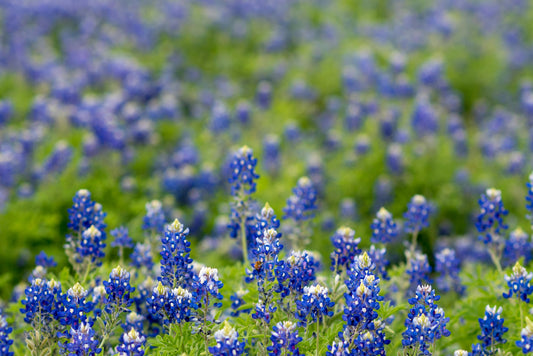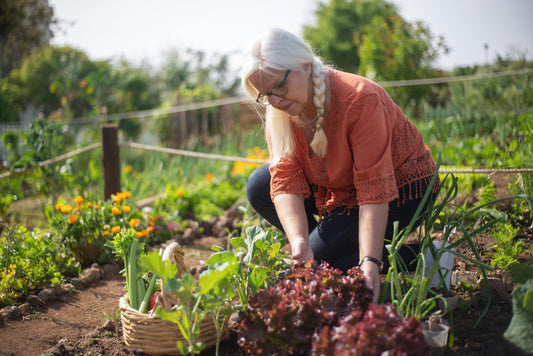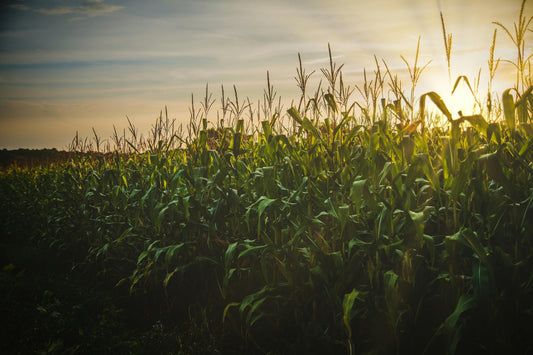New York City's complex geological history and intensive urban development have created diverse soil conditions that support everything from Central Park's landscapes to rooftop gardens. Understanding these varied soil types—from contaminated urban soils to fertile wetland soils—is essential for successful urban gardening, green infrastructure development, and sustainable city planning.
New York City Soil Types: Complete Guide to Urban Gardening & Green Infrastructure
New York City features seven primary soil types: urban soils from development activities, glacial till from ice age deposits, alluvial soils along waterways, clay soils in low-lying areas, sandy coastal soils, rocky upland soils, and wetland soils in marshy areas, each requiring specific management approaches for urban applications.
Understanding NYC's Geological Foundation
New York City's soil diversity reflects its complex geological history shaped by glacial activity, coastal processes, and extensive urban development. The Wisconsin Glaciation approximately 20,000 years ago deposited much of the parent material that forms today's soils across the metropolitan area.
The underlying bedrock consists of schist, gneiss, and marble that influences soil chemistry and drainage patterns. Rivers like the Hudson, East River, and numerous streams have deposited alluvial sediments, while coastal processes have created sandy soils along shorelines.
Urban development over centuries has dramatically altered natural soils through construction, filling, and contamination. Understanding this geological foundation helps explain why soil conditions vary so dramatically across different neighborhoods and boroughs.
Primary Soil Types in New York City
Urban Soils: The Metropolitan Challenge
Urban soils dominate much of Manhattan, Brooklyn, and developed areas throughout NYC. These anthropogenic soils result from construction activities, fill material placement, and decades of urban development that have significantly altered natural soil conditions.
Compaction represents a major challenge in urban soils due to heavy construction equipment, foot traffic, and infrastructure development. This compaction reduces water infiltration, limits root penetration, and decreases soil biology essential for plant health.
Contamination concerns in urban soils include lead from old paint and gasoline, petroleum products from vehicles and heating systems, and various industrial chemicals from historical manufacturing activities. Professional soil testing becomes essential before establishing gardens or landscapes.
Despite these challenges, urban soils can support vegetation with appropriate management including decompaction, organic matter additions, and contaminant remediation. Green roofs and raised bed systems provide alternatives for growing in contaminated urban soil areas.
Glacial Till: Legacy of the Ice Age
Glacial till soils occur extensively throughout Manhattan, the Bronx, and parts of Brooklyn, deposited by retreating glaciers during the last ice age. These soils contain mixed particle sizes from clay to boulders, creating variable growing conditions.
The heterogeneous nature of glacial till creates both challenges and opportunities for urban landscaping. Well-drained areas support diverse vegetation, while poorly drained pockets may require drainage improvements or water-tolerant plant selections.
Central Park's landscapes largely utilize glacial till soils that have been modified through decades of management and soil improvement. These soils demonstrate the potential for creating productive growing conditions from glacial materials.
Glacial till management focuses on working with natural drainage patterns, adding organic matter to improve structure, and selecting plants appropriate for variable soil conditions within the same area.
Alluvial Soils: Riverside Fertility
Alluvial soils occur along the Hudson River, East River, and other waterways where centuries of sediment deposition have created some of NYC's most fertile growing conditions. These soils support much of the city's urban agriculture initiatives.
High organic matter content and natural fertility make alluvial soils excellent for vegetable production and urban farming. However, flooding risks and potential contamination from upstream sources require careful site evaluation and management.
Many community gardens in Brooklyn and the Bronx utilize alluvial soils that provide excellent growing conditions when properly managed. These soils respond well to organic farming practices and sustainable soil management techniques.
Erosion control becomes important for alluvial soils, particularly during heavy rainfall events. Cover cropping, mulching, and proper drainage help preserve these valuable soil resources.
Clay Soils: Water Management Challenges
Clay soils occur in various locations throughout NYC, particularly in Brooklyn, Staten Island, and low-lying areas where fine sediments have accumulated. These soils present both benefits and challenges for urban applications.
Excellent nutrient retention makes clay soils potentially very productive, but poor drainage and compaction susceptibility create management difficulties. Clay soils become extremely hard when dry and muddy when wet, limiting access and workability.
Shrink-swell behavior in clay soils can damage infrastructure and foundations, making them challenging for construction applications. However, with proper management, clay soils can support excellent gardens and landscapes.
Clay soil improvement strategies include organic matter additions to improve structure, drainage enhancements where necessary, and careful timing of cultivation to prevent compaction damage.
Sandy Coastal Soils: Drainage and Salt Challenges
Sandy soils dominate NYC's coastal areas including the Rockaways, Coney Island, and Staten Island shores. These soils provide excellent drainage but present challenges for nutrient and water retention.
Salt spray and occasional flooding with saltwater create additional challenges for plant selection and soil management in coastal sandy areas. Salt-tolerant plants and soil amendments help overcome these limitations.
Sandy soils support important coastal ecosystems including dune vegetation that provides natural storm protection. Preserving and restoring these soil-plant systems contributes to coastal resilience.
Management of sandy soils emphasizes organic matter additions to improve water and nutrient retention, appropriate plant selection for coastal conditions, and erosion control to prevent soil loss.
Rocky and Gravelly Soils: Limited Depth Challenges
Rocky and gravelly soils occur in upland areas of the Bronx, Manhattan, and other elevated locations where bedrock lies close to the surface. These shallow soils present unique gardening challenges and opportunities.
Limited soil depth restricts plant choices to shallow-rooted species, but excellent drainage prevents waterlogging problems common in other soil types. These soils often support specialized plant communities adapted to rocky conditions.
Rock gardens, native plant landscapes, and low-maintenance plantings work well in rocky soil areas. These soils require minimal amendment but benefit from organic matter additions in planting pockets.
Wetland Soils: Ecosystem Services and Conservation
Wetland soils occur in Jamaica Bay, the Meadowlands, and other marshy areas throughout the NYC region. These hydric soils develop under saturated conditions and provide critical ecosystem services.
High organic matter content in wetland soils supports diverse plant and animal communities while providing natural flood control and water filtration. These soils represent some of the region's most ecologically valuable land.
Wetland soil conservation focuses on protecting existing systems from development, pollution, and degradation. Restoration efforts work to rebuild damaged wetland soil functions and plant communities.
| Soil Type | Key Characteristics | Best Applications | Management Challenges |
|---|---|---|---|
| Urban | Compacted, variable composition, often contaminated | Green roofs, raised beds, street trees | Contamination, compaction |
| Glacial Till | Mixed particle sizes, variable drainage | Parks, landscaping, diverse plantings | Variable conditions |
| Alluvial | Fertile, organic-rich, good structure | Urban farms, community gardens | Flooding, potential contamination |
| Clay | High nutrient retention, poor drainage | Water-tolerant plants, rain gardens | Compaction, drainage |
| Sandy | Excellent drainage, low fertility | Coastal plants, quick-draining needs | Nutrient retention, salt exposure |
| Rocky/Gravelly | Shallow depth, excellent drainage | Rock gardens, native plants | Limited planting depth |
| Wetland | Organic-rich, saturated, anaerobic | Flood control, habitat, filtration | Regulatory protection needed |
Soil Contamination and Safety
Soil contamination represents a significant concern for urban gardening and landscaping in New York City. Historical industrial activities, transportation, and building materials have left legacy contamination in many areas.
Lead contamination occurs commonly in urban soils, particularly near old buildings where lead paint may have contaminated surrounding soil. Petroleum products from vehicles, heating systems, and industrial activities also contaminate urban soils.
Professional soil testing becomes essential before establishing food gardens or allowing children to play in soil areas. Testing typically costs $50-200 depending on the scope of analysis and provides critical safety information.
Remediation strategies include soil replacement, raised bed systems with imported soil, and phytoremediation using plants that can extract contaminants. Professional guidance helps determine the most appropriate approach for specific contamination situations.
Urban Gardening Strategies
Successful urban gardening in NYC requires matching growing strategies to soil conditions and overcoming urban-specific challenges through appropriate techniques and amendments.
Raised bed systems provide immediate solutions for contaminated or poor-quality soils by creating controlled growing environments with imported soil. These systems also improve drainage and accessibility for urban gardeners.
Container gardening offers flexibility for areas with severely compromised soils or limited space. Rooftop gardens, balcony plantings, and portable systems enable food production without relying on ground soil.
Soil improvement through organic matter additions, composting, and biological amendments can gradually restore urban soil health and productivity over time with consistent management.
Green Infrastructure Applications
NYC's diverse soil types support various green infrastructure applications that provide environmental benefits while working with existing soil conditions.
Green roofs utilize specially designed growing media that provides plant support while managing stormwater, reducing building energy use, and creating habitat in urban areas. These systems work particularly well where ground-level soil conditions are poor.
Rain gardens and bioswales use soil infiltration capacity to manage stormwater runoff while supporting vegetation. Clay soils may require modification, while sandy soils often work well for these applications.
Urban forests and street tree programs must work with compacted urban soils through specialized planting techniques, soil volume provision, and species selection for challenging growing conditions.
Soil Testing and Management
Regular soil testing provides essential information for successful urban gardening and landscape management in NYC's diverse soil conditions. Testing should include basic fertility, pH, and contamination screening.
Cornell Cooperative Extension and other local organizations provide soil testing services and interpretation guidelines specific to urban conditions. Professional testing helps identify both opportunities and limitations for specific sites.
Soil amendments should target specific needs identified through testing. Organic matter improves most soil types, while pH adjustment, drainage improvement, or contamination remediation may be necessary for specific conditions.
Frequently Asked Questions
What is the most common soil type in NYC?
Urban soils are the most common soil type in New York City, particularly in Manhattan and developed areas of Brooklyn. These anthropogenic soils result from construction, fill material, and urban development activities.
Can I garden safely in NYC urban soils?
Yes, but soil testing for contaminants like lead is essential before gardening. Raised beds with imported soil provide the safest option for food production in urban areas.
What causes soil contamination in New York City?
Historical industrial activities, lead paint, vehicle emissions, and construction materials contribute to soil contamination in NYC. Areas near former industrial sites or old buildings often have higher contamination levels.
How do I identify my soil type in NYC?
A simple ribbon test can help identify soil texture, but professional testing provides comprehensive information about soil type, fertility, and potential contamination issues.
Are alluvial soils good for urban farming?
Yes, alluvial soils along waterways are often the most fertile soils in NYC, but they require testing for contamination and may need flood management strategies.
How do I improve clay soil drainage?
Add organic matter like compost, consider raised beds, install drainage tiles if necessary, and avoid working the soil when wet to prevent compaction.
What plants work best in sandy coastal soils?
Salt-tolerant native plants like beach grass, seaside goldenrod, and bayberry work well in sandy coastal soils. Regular organic matter additions help improve growing conditions.
How often should I test urban soil?
Test urban soil before initial planting and every 2-3 years thereafter. More frequent testing may be necessary in areas with known contamination issues.
Can I grow vegetables in glacial till soil?
Yes, glacial till can support vegetable production with organic matter additions and appropriate drainage management. Choose varieties suited to your specific soil conditions.
What's the best soil amendment for NYC gardens?
Compost is the most beneficial amendment for most NYC soils, improving structure, fertility, and biological activity while helping remediate minor contamination issues.
Conclusion
New York City's diverse soil types reflect both its rich geological heritage and complex urban development history. From fertile alluvial soils supporting urban agriculture to challenging contaminated urban soils requiring remediation, each soil type presents unique opportunities and challenges for sustainable urban living. Success in NYC's urban environment comes from understanding soil limitations, testing for safety, and applying appropriate management strategies. Whether creating rooftop gardens, community food gardens, or green infrastructure systems, working with rather than against soil conditions enables productive and sustainable urban landscapes. Through careful soil management, contamination remediation, and appropriate technology applications, NYC's soils can continue supporting the city's environmental goals while providing green spaces and food production opportunities for residents. The key lies in matching expectations and practices to soil realities while continuously improving soil health through sustainable management approaches.
Sources
- USDA Natural Resources Conservation Service. Web Soil Survey - New York City Area. https://websoilsurvey.sc.egov.usda.gov/
- Cornell Cooperative Extension of New York City. Urban Soil Management Guidelines. https://www.cce.cornell.edu/
- NYC Department of Environmental Protection. Soil Contamination Information. https://www1.nyc.gov/site/dep/
- EPA Region 2. Urban Soil Assessment Guidelines. https://www.epa.gov/aboutepa/epa-region-2
- USDA Natural Resources Conservation Service. Soil Health Assessment. https://www.nrcs.usda.gov/resources/guides-and-instructions/soil-health
- NYC Parks Department. Urban Forestry and Soil Management. https://www.nycgovparks.org/
- New York State Department of Environmental Conservation. Soil Remediation Guidelines. https://www.dec.ny.gov/
- Rodale Institute. Urban Soil Health Research. https://rodaleinstitute.org/science/soil-health/












